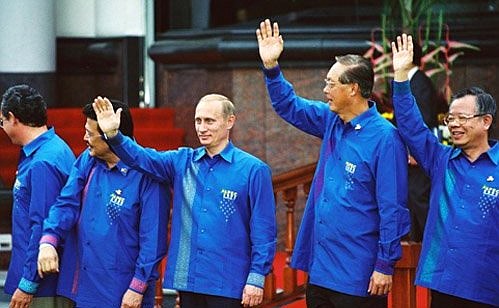
Each markets the product to a different market segment or to a different geographical area. The horizontal integration of production is where a firm has plants in several locations producing similar products. Horizontal integration in marketing is much more common than horizontal integration in production. Facebook (now Meta) acquiring Instagram is a typical example of horizontal integration because both companies operate in the same industry and share similar production stages in their photo-sharing services. Facebook and Instagram are operating in the social media industry as they offer their consumers a platform to socialize and communicate with each other. Horizontally integrated firms obtain many different benefits from implementing this strategy.
Horizontal Integration vs. Vertical Integration: Key Differences – Investopedia
Horizontal Integration vs. Vertical Integration: Key Differences.
Posted: Sat, 25 Mar 2017 11:49:50 GMT [source]
This FTC scrutiny may result in FTC rejecting corporate attempts to acquire a supplier or distributor to reduce production or supply chain costs. Such is the case with Lockheed Martin’s effort to acquire Aerojet Rocketdyne. Besides expanding revenues with a larger product and services offering, entering new international markets, and achieving synergies, Baxter will gain connectivity technology expertise from HillRom. Anti-monopoly commissions tend to be more lenient on some industries than others. If an industry is outside the regulator’s focus, horizontal integrations are more likely to happen.
Examples of Vertical Integration
Lockheed Martin Corporation terminated its attempted Aerojet Rocketdyne vertical acquisition of a supplier in February after the U.S. This is an example of a backward integration attempt to purchase a parts horizontal integration examples supplier. Vertical integrations are no different to any other M&A transaction in that the due diligence phase is a demanding process where significant amounts of transaction value are created or destroyed.

An internal expansion is reinvestment of capital by the company that shares some of the features of mergers and acquisitions. It can involve new product development or investment in the existing operations, such as geographic expansion that does not involve M&A. An example is how Samsung, a South Korean company, expanded its operations to over 200 countries across the world.
Sprint and T-Mobile Merger – Anti-Trust Suit and Controversy
Through internal expansion, a company simply chooses to strategically change course and apply more resources in a different way. For example, a restaurant can expand to offer catering companies, or a beverage manufacturer may branch off to make food products. Similar to a merger, an acquisition occurs when one company outright takes over the operations of another company. Though the two companies technically join together, one company remains in control. The acquiring company’s staff, executives, and operations often remain in place, while the acquired company’s resources are integrated as management sees fit.

Vertical integration is often undertaken to have better control over a long process, while horizontal integration is more suitable for a company wanting to become more niche for something specific. Horizontal integration often entails similar companies coming together, while vertical integration often entails different companies related to a similar product coming together. When two companies merge, two separate entities create a new, joint organization. The brand of one of those two companies is usually retained, though the composition of operations and personnel is shared between both of the former individual companies.
Higher efficiency by increased market power
Even when a merger between two different industries takes there is a common point in terms that are used. The improvement in economies of scale more than offsets the cost incurred as part of the integration deal. The aim of adopting a horizontal integration strategy by a company is to increase its size or market share, gain economies of scale, explore new markets, raise product differentiation, or reduce competition. In a simple way, Horizontal integration is known as the process of procuring a commercial entity that is functioning in the same sector or level.
What is an example of horizontal integration economics?
Horizontal integration occurs when there is a merger between two firms in the same industry operating at the same stage of production. For example, if two newspapers like the Independent and the Guardian merged, this would be a horizontal integration.
Similarly, the fixed assets got doubles and there was an increase in cash balances too. The acquisition did not involve a merge of names, but did involve Walt Disney Studios as a subsidiary and The Walt Disney Company as owner. In 2001 and 2004, Pixar had conflicts with Disney because the terms of collaboration for the films were not agreed upon.
Horizontal Integration vs Vertical Integration
A different type of merger is vertical integration, which is when companies merge that are in different positions in the value chain. For example, a car manufacturer could buy a producer of car tires, in order to secure this input to its production line. The key difference between the horizontal and vertical integration concepts is that horizontal integration occurs among similar businesses, while vertical integration occurs between suppliers and customers. This merger resulted in a global technology leader worth the US $87 billion that offers the most extensive IT products and services for customers and businesses. The new Hewlett-Packard became a global player of top-level in access devices, IT services, printers, and imaging, etc. Synergies related to revenue and costs were made to create considerable value for shareholders and provide opportunities for new growth.
- Businesses seeking growth and cost reductions acquire other companies or product lines through horizontal and vertical mergers & acquisitions, resulting in the integration of two or more companies.
- They are able to better serve their customers as well as expand their knowledge of customer demands and the industry.
- The improvement in economies of scale more than offsets the cost incurred as part of the integration deal.
- However, if the industry concentration increases significantly then anti-trust issues may arise.
- Facebook (now Meta) acquiring Instagram is a typical example of horizontal integration because both companies operate in the same industry and share similar production stages in their photo-sharing services.
- Department of Justice & The Federal Trade Commission have jointly issued Vertical Merger Guidelines that provide information for corporations considering vertical acquisitions.
Is Starbucks horizontal integration?
Starbucks uses both forward and backward vertical integration to maximize profits. By maintaining direct relationships with coffee growers and owning their equipment, storage, and roasting facilities, Starbucks can control its entire manufacturing process.
